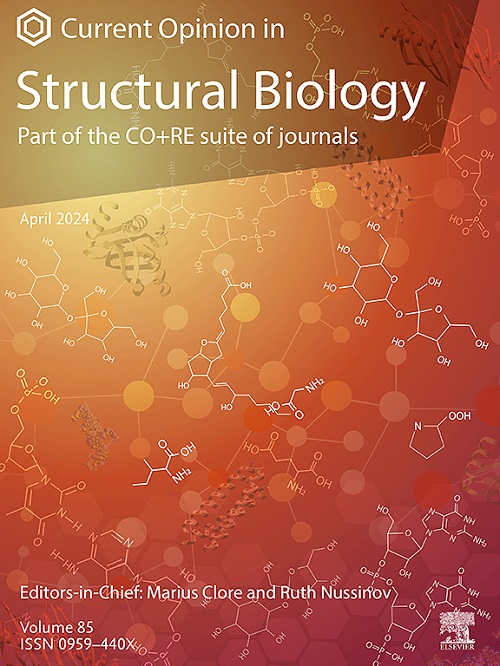实现蛋白质从序列到功能范式的待办事项清单
IF 6.1
2区 生物学
Q1 BIOCHEMISTRY & MOLECULAR BIOLOGY
引用次数: 0
摘要
从氨基酸序列直接确定蛋白质的功能是结构生物学和分子生物物理学学界长期以来的梦想。然而,目前可用的大多数方法都是基于同源性或库的,并且经常破坏从可比序列中确定发散函数,反之亦然。序列-功能关系本质上依赖于蛋白质动力学的生物物理空间,这可以潜在地利用来注释功能。但是,尽管进行了三十年的积极研究,分子动力学数据的空间仍然严重不足。通过对现有文献的调查,我们强调了机器学习方法背景下的这一灰色地带。此后,我们将分享一些指向学习生物物理表征(或特征)的例子,并将它们与整合模型相结合,作为将序列与功能稳健关联的手段。其目的是避免为了实现数据的完整性和泛化而计算蛋白质动力学长达一千年。本文章由计算机程序翻译,如有差异,请以英文原文为准。
A to-do list for realizing the sequence-to-function paradigm of proteins
It has been a longstanding dream of the structural biology and molecular biophysics communities to determine protein functions directly from the amino acid sequences. Most methods available today, however, are homology- or library-based and often undermine determining divergent functions from comparable sequences or vice versa. The sequence-to-function relationship is intrinsically dependent on the biophysical space of protein dynamics, which can be potentially exploited to annotate function. But, despite three decades of active research, the space of molecular dynamics data remains grossly underpopulated. By employing surveys of the existing literature, we highlight this gray area in the context of machine learning methods. Thereafter, we share examples that point toward learning biophysical representations—or signatures—and combining them with integrative models as means to robustly associate sequence with function. The aim is to avoid having to compute protein dynamics for an impossible thousand years to achieve data completeness and generalization.
求助全文
通过发布文献求助,成功后即可免费获取论文全文。
去求助
来源期刊

Current opinion in structural biology
生物-生化与分子生物学
CiteScore
12.20
自引率
2.90%
发文量
179
审稿时长
6-12 weeks
期刊介绍:
Current Opinion in Structural Biology (COSB) aims to stimulate scientifically grounded, interdisciplinary, multi-scale debate and exchange of ideas. It contains polished, concise and timely reviews and opinions, with particular emphasis on those articles published in the past two years. In addition to describing recent trends, the authors are encouraged to give their subjective opinion of the topics discussed.
In COSB, we help the reader by providing in a systematic manner:
1. The views of experts on current advances in their field in a clear and readable form.
2. Evaluations of the most interesting papers, annotated by experts, from the great wealth of original publications.
[...]
The subject of Structural Biology is divided into twelve themed sections, each of which is reviewed once a year. Each issue contains two sections, and the amount of space devoted to each section is related to its importance.
-Folding and Binding-
Nucleic acids and their protein complexes-
Macromolecular Machines-
Theory and Simulation-
Sequences and Topology-
New constructs and expression of proteins-
Membranes-
Engineering and Design-
Carbohydrate-protein interactions and glycosylation-
Biophysical and molecular biological methods-
Multi-protein assemblies in signalling-
Catalysis and Regulation
 求助内容:
求助内容: 应助结果提醒方式:
应助结果提醒方式:


